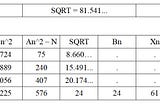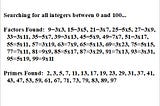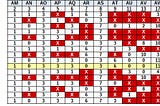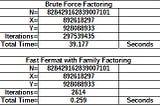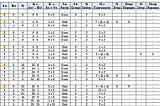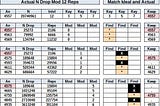Jan 2, 2025
8 stories
When studying integer factoring, I always thought that prime numbers were orphans. As it turns out, they each have a family tree. Sadly, the demons of mathematics ensured that every odd number also has a family tree, so there is no new insight into prime number differentiation. The families none-the-less are still fascinating in their own right and I will attempt to provide an introduction in this essay.
Lists of prime numbers can be produced using Integer Factoring Families and JavaScript code. This is accomplished by a brute force elimination and substitution routine. All integers greater than 2 that are found in a specific range are put in a list. Using the properties of Integer Factoring Families, all the integers that can be factored are removed from the list. The residue is a list of the prime numbers in that given range. No magic is required, just lots and lots (and lots) of simple but time consuming calculations.
Is there another level in the Integer Factoring Families? The answer is yes, but it is not what you might expect. Some intervals can be eliminated; however, the overhead calculations will grow proportionally. Please sit back and enjoy another journey into the realm of mathematical madness!
I finally have a decent algorithm for speeding up Fermat Integer Factoring, but I can not tell at this time whether it is a game changer or merely an incremental improvement. Perhaps if I had a fast computer with lots of array storage, I might be able to determine that. Alas, that is not likely to be the case anytime in the foreseeable future.
This essay provides the JavaScript Code for several of my favorite simple Integer Factoring Routines and the prototype for Enhanced Fermat and Fast Fermat Integer Family Factoring. This software is functional (to a degree) and is provided to demonstrate that the math involved in Integer Family Factoring can be incorporated into working software. Please be aware this software has not passed anything resembling a comprehensive test and may have (lots of) unresolved bugs. Whether you choose to run this software or not, it still exists for your education and study. So, enjoy!
What is the purpose of Integer Factoring Families? In simplest terms, the purpose of Integer Factoring (in general) is to reduce the computational time required to determine the integer factors of (very) large integers. In this context, the purpose of Integer Factoring Families is to reveal mathematical relationships that facilitate computation shortcuts.
Yes, it is mostly a review of the subject, but I think the introduction of Anti-Keys at the end is noteworthy.
Anti-Keys from Integer Factoring Families can reduce the computational time required to factor large integers... actually, by quite a bit.
When performing Fermat integer factoring, many potential integer squares are generated. Many of these require running a square root routine to verify. Is it possible to avoid these false squares?
